With cars becoming more expensive, more complicated, and seemingly less reliable, many are looking for dependable personal transportation that would serve for many years. Despite recent mishaps, Toyota still has a great reputation for reliability. Sadly, not all of the company's latest models live up to that reputation. While Toyota has taken steps to make it up to customers who had experienced issues (or might in the future), the damage has already been done.
Toyota trucks and SUVs are very popular in North America, and this got me thinking: which should be your "forever” truck? It didn't take long for me to find the answer. People on forums and automotive publications seem to agree that the second-generation Toyota Tundra, particularly the later model years, is a no-brainer.
There are a number of valid reasons for that, which I have listed below. In addition, I am looking into common problems, some uncommon ones, as well as the best steps to preserve your Toyota Tundra (or any other truck/ vehicle) if you plan on keeping it for a long time.
Toyota's glorious V-8 engine
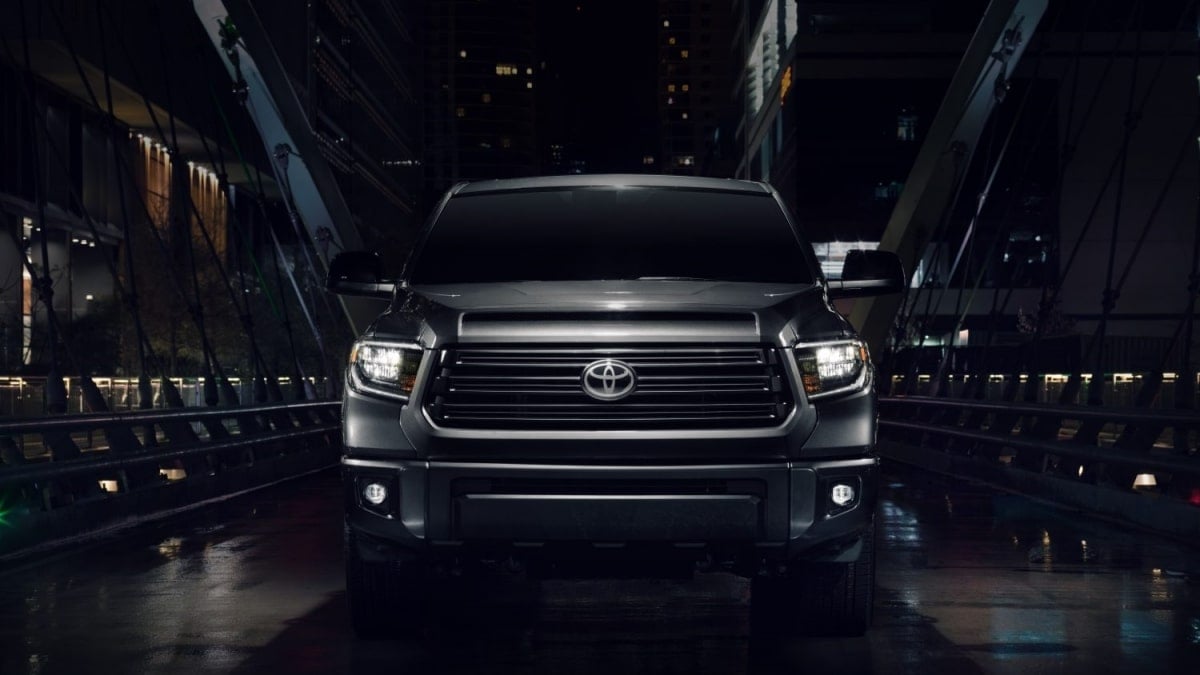
The 2007 to 2021 Toyota Tundra comes with a pick of four different engines, three of which V-8s. The base engine was a 4.0-liter 1GR-FE V-6 unit, which was used in many other Toyota trucks and SUVs, including the soon-to-be-revived Toyota FJ Cruiser and the previous-generation Toyota 4Runner. Sadly, Toyota's new V35A twin-turbo V-6 isn't as trouble-free as its predecessor. The V-6 was dropped for the second-generation Tundra, for the 2017 model year, leaving the full-size pickup truck as a V-8-only offering.
What most people are interested in, however, are the V-8 options. Depending on the model year, you can choose between the 4.7-liter 2UZ-FE, the 4.6-liter 1UR-FE, and the range-topping 5.7-liter 3UR-FE, which is the most popular option. All three Toyota V-8 engines are all-aluminum, normally-aspirated, DOHC units. The UR-series are newer and feature direct fuel injection while the 2UZ comes with multiport fuel injection.
Great towing capabilities

With the range-topping V-8, the Toyota Tundra can tow up to 10,800 pounds, although some owners claim to have towed over 13,000 pounds, which is more than the current Toyota Tundra's 12,000-pound towing capacity. We are yet to see a brave owner attempt to tow more than that. Please, let me know if you have done it. Also, let's not forget Toyota's publicity stunt where a second-generation Toyota Tundra was towing a space shuttle – those can weigh well over 4.0 million pounds, but of course, Toyota is referencing values for safe towing.
Fuel economy is not the V-8 Tundra's strong suit. Still, the 14 MPG combined (for the 4WD version) are acceptable. Apparently, the new Toyota Tundra is surprisingly thirsty when towing, according to some owners, and even the V-8 Tundra's MPG doesn't look that bad, in comparison.
The sheer reliability and simplicity of the second-generation Toyota Tundra
The 2007-2021 Toyota Tundra is considered the most reliable full-size pickup truck you can buy. Aside from a few minor changes over the years, the second-generation Tundra remained virtually the same over its entire production cycle. A classic case of “if it works, don't fix it", which is something Toyota plans to do with the 2026 Toyota RAV4. Consumer ratings and publications consistently give even early model years maximum (or close to maximum) reliability rating. Part of that is the lack of complicated hybrid powertrains.
The V-8 engine sits low in the spacious engine bay and almost everything is easy to get to, aside from the starter, which is located at the rear of the engine, under the intake manifold. There are examples of high-mileage Toyota Tundra trucks that run like new, all around. At least one second-generation Tundra managed a million miles, which apparently served as inspiration for the third-generation Toyota Tundra.
Still, there are a few things to look for when considering buying a second-generation Toyota Tundra, as there are a few common issues and service recalls over the years. Early models, in particular, have more documented issues, but nothing major, for the most part. Later models experience the below-mentioned “common” problems a lot less as many of the issues have been addressed.
2007-2021 Toyota Tundra common problems:
1. Exhaust manifold leak may cause ticking noise. Repair cost - $1,178 -$1,377 (for exhaust manifold replacement), $669 -$825 (for exhaust manifold gasket replacement). Affected model years – 2007 to 2012
2. Secondary air pump failure may cause check engine light, increased fuel consumption and emissions. A reported symptom is a loud “vacuum cleaner” noise on cold starts (2007-2013 models). Repair cost: $88-$111
3. Oxygen (O2) sensor(s) may fail illuminating check engine light. Repair cost: $380 -$416
4. Rear driveshaft premature wear (on 4WD models produced 2007), causing vibrations and clunking noises between gears.
5. Camshaft failure due to manufacturing defect/ cam lobe wear due to soft material (2007 models only). Can result in rough idle and loss of power.
There are a number of service recalls, concerning the second-generation Toyota Tundra. The number varies by model year. According to RepairPal, for 2007, the number of service recalls is 12, some of which major. It is important to note that these service recalls are not only for the Tundra and the number of affected vehicles given is the total number of all vehicles that may experience these issues. Those include the following:
1. Incorrect labels for tire load. Number of potentially affected vehicles – 153,418
2. Missing load-carrying label. Two service recalls issued, Number of potentially affected vehicles – 27,080 and 271,417 for the second recall.
3. The throttle pedal may get stuck in bottom position, causing unwanted acceleration. There are two recalls for this, Number of potentially affected vehicles – 4,445,056 and 2,230,661 for the second recall.
4. Driveshaft may break without warning (2007 Toyota Tundra only), Number of potentially affected vehicles – 15,616
5. Seat heater wiring may short out, potentially causing fire. Two service recalls. Number of potentially affected vehicles – 3,223 and 7,749 for the second recall.
6. Master window switch may overhead. Number of potentially affected vehicles – 2,519,424
7. Power steering gear may develop oil leaks, leading to loss of power-steering assist. Number of potentially affected vehicles – 22,462
8. Tire-pressure warning light may fail to notify about low tire pressure. Number of potentially affected vehicles – 1,629
9. Wheel lug nuts prone to cracking and breaking. Number of potentially affected vehicles – 1,716
How to future-proof your second-generation Toyota Tundra

The second-generation Toyota Tundra seems to be one of the most popular choices for long-term full-size pickup trucks. Many owners plan on driving their Tundras for a long time, but if you are planning to do the same, there are a few things I recommend you do to your truck.
1. Anti-rust treatment – Like most Japanese vehicles, the second-generation Toyota Tundra is prone to rust. One of the key things to look for is frame rust. Everything else is fixable, but if the truck's steel frame is too bad, you might want to consider a different vehicle.
Naturally, older examples or ones that have resided in the “rust belt” would have it the worst. A good way to preserve your truck's frame is to treat it with a special coating. If you like a challenge, you can also restore a rusted frame, but depending on the condition, it may be too expensive to make financial sense.
2. Six-lug axle. If you plan on towing a lot with your second-generation Toyota Tundra, the six-lug conversion is a must. The second-generation Toyota Tundra is the only generation that comes with five-lug hubs. The first and third generation come with six-lug axles (6x139mm bolt pattern). Luckily, there are aftermarket solutions for the deuce.
3. Upgrade your suspension. Some second-gen Tundra owners complain that when towing heavier loads, the truck squats too much. The rear suspension is too softly sprung, so you may want to address this by going with one of the aftermarket solutions, developed specifically for the model.
4. Do not modify the engine. The 5.7-liter i-Force V-8 develops a healthy 381 horsepower at 5,600 RPM and 401 pound-feet at 3,600 RPM. This allows for a 0 to 60 mph time of 6.3 seconds, which is modern-day hot hatchback levels of quick. Toyota also offered a TRD supercharger package. It added a TVS Roots-type supercharger, bumping power to 504 horsepower and 550 pound-feet, resulting in a 4.4-second 0 to 60 mph time.
Toyota discontinued the TRD supercharged package in 2015, but Magnusson has a similar solution. The main point is, the i-Force is an under-stressed engine. While I understand the temptation, I would advise against going for the supercharger kit even though the engine can take it.
6. Keep up on maintenance. I know this goes without saying, but even Toyotas eventually give out due to poor maintenance. Sure, the Tundra, like most older Toyotas will forgive you if you don't keep the maintenance schedules to the letter (within reason), but keeping up with the intervals is key if you want this to be your “forever” truck.
You only need to read through the many forum threads where people praise their 250,000-mile or 500,000-mile Tundra for “running like new”. Are you a Toyota Tundra owner? If so, feel free to share your thoughts in the comment section below.
Dimitar Angelov's automotive interests made him an expert in a wide variety of vehicles. Japanese brands like Toyota are closest to his heart, although performance cars in general are his favorite segment, which is why he is constantly on the lookout for the best deals on the market. Dimitar Angelov's car passion and knack for the written word led him to complete a Master of Arts in Media and Communications, and classic car restoration. Dim is happy to get behind the wheel of any car and share his impressions. You can follow Dimitar on X, Linked-in, Instagram, and Facebook.
Image source: 2011 Toyota Tundra, 2021 Toyota Tundra


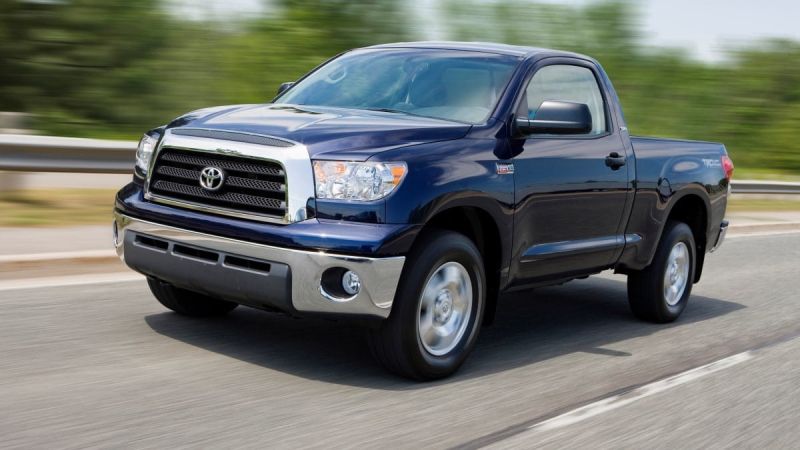




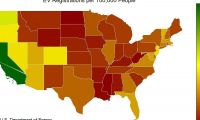
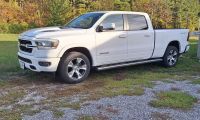
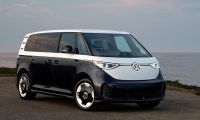
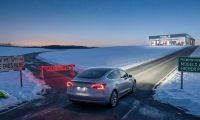

Comments
Yes, I love my 2007 Tundra…
Permalink
Yes, I love my 2007 Tundra.
Mine is an S package tundra, meaning it's got 4.10 gears instead of the 4.30 that most came with. In 2007 tundra was introduced stating 0-60 time was 5.6 sec, with the 5.7, which the S package can do. I've surprised many sports car and hatch drivers withy off the line speed. And even rolling acceleration at 60 is pretty amazing.
Mine only has 39k original miles as well. Fun fun fun!!!
It sounds like those 4.30…
Permalink
In reply to Yes, I love my 2007 Tundra… by Joel (not verified)
It sounds like those 4.30 gears really change the truck's character. Anything under 6.0 seconds to 60 mph is impressive for a full-size pickup truck.
I am more surprised you only have 39k miles on the odometer. A true gem in my opinion.
Has it been through any of the service recalls?
Bought my 2007 tundar new…
Permalink
Bought my 2007 tundar new.. great truck.. very little problems over the years....have the 4.7 eng..4x4.... still works great...getting ready to have alittle paint work done......i call her sandy because of her color.....have 165.000 miles ....has been a very good truck....
That 4.7 is a bulletproof…
Permalink
In reply to Bought my 2007 tundar new… by Joe johnson (not verified)
That 4.7 is a bulletproof mill. Probably one of the best Toyota V-8 engines if you are looking for simplicity and reliability.
Have you experienced any of the common issues?
I know "common issues" is sometimes a widely used term. Most of the common issues I wrote about are not exclusive to the second-gen Tundra.
My '07' has 86,000 miles…
Permalink
My '07' has 86,000 miles. Only major problem was the steering sector. Replaced. Oh and the box rusted out from the bottom up. Replaced. No rust anywhere else cuz I grease wheelwells and other suspect areas. And I live in wisconsin. She's 17 and I'm 70 and I'm gonna drive her til one of us dies.
Sounds like you've done one…
Permalink
In reply to My '07' has 86,000 miles… by dennis etlicher (not verified)
Sounds like you've done one of the most important things on these trucks - make sure the "suspect" areas don't develop rust. What product did you use?
I have had a 2010 and…
Permalink
I have had a 2010 and currently have a 2018 with 320k and 241k both with the 4.6L. Prior 2003 4.7 with 330k, change that timing belt.
Smog pumps have been an issue.
Engines are solid the trannies get mushy at higher mileage.
Did you do something to…
Permalink
In reply to I have had a 2010 and… by Tracy (not verified)
Did you do something to restore the transmission's performance? Complete system flush maybe?
I have a 2018 tundra, my…
Permalink
I have a 2018 tundra, my forever truck. Never had issue, love it!
Awesome! What's your mileage?
Permalink
In reply to I have a 2018 tundra, my… by Sam Floyd (not verified)
Awesome! What's your mileage?
Bought my 5.7l tundra crew…
Permalink
Bought my 5.7l tundra crew max in 2008. It has 55000 miles and runs like a champ.
I have never taking to a dealer for repairs. Irreligiously change the oil every 3000 miles on the clock. The only major thing I did to it is I replaced the rotors due to the fact that I use it for towing. Drove it to Cabo San Lucas Mexico towing a 20 foot trailer weighing well over twelve thousand pounds. Ran amazingly but did consume more gas than the average consumption.
Changed the serpentine belt myself and the only upgrade I did to it is a cold intake air filter that really made a major difference in power gains. I plan to keep for ever due to the new cost of the new ones. Just like you said if it ain’t broken Don’t fix it. Some minor rust showing on the paint which I will eventually have to have the truck painted. Underneath rust is minor I am looking into getting it protected but not sure what avenue is the best. Any suggestion on that would be greatly appreciated. Thank you
Ah, someone who uses their…
Permalink
In reply to Bought my 5.7l tundra crew… by Sami Bentroudi (not verified)
Ah, someone who uses their truck like they are meant to. Someone else commented about rust protection. Said he greased te "suspect" areas that are most prone to rust.
I did some digging and some people recommend a product named LPS3, but according to the description, it should be applied every 2 years for optimal results.
I'm sure there are forum discussions all around the intermnet as many people are looking to keep these trucks alive for as long as possible.
I have the 2016 V8 5.7…
Permalink
I have the 2016 V8 5.7 Tundra and she runs like a beauty n still running brand new!! I have 300,000 on it cuz I used it with Uber n my customers loved her!! I would get tremendous gas mileage with her n atleast 20 + gas mileage with her!! The only problem I had is replacing the alternator which is a normal replacement due to mileage use!!
A Toyota Tundra Uber? Wow!…
Permalink
In reply to I have the 2016 V8 5.7… by Alex Jaramillo (not verified)
A Toyota Tundra Uber? Wow! Anything over 20 MPG is great for these trucks.
The alternator was between the engine heads if I recall correctly. Probably the only weird thing on these trucks.
Alternator is located on…
Permalink
In reply to A Toyota Tundra Uber? Wow!… by Dimitar Angelov
Alternator is located on bottom front of the engine, under the power steering pump
I have a 2011 tundra sr5 4…
Permalink
I have a 2011 tundra sr5 4 wheel drive i bought new
At 90000 miles we were towing our rv(we had towed it for 5 years with it) and had a catastrophic engine failure(5.7 liter) engine that threw rods and it seized up. Had to buy a used engine with 30000 miles on it. The odometer today shows 160000 miles approximately. I hope to drive it for several more years. Other than engine issue never had any other issues with it. I also still drive a 2002 tundra sr5 that has 230000 on it. Never had to do anything to it except routine maintenance and replace radiator once. Im still a big fan of the 2nd generation even though that used engine was not cheap.
I have a 2011 Toyota Tundra…
Permalink
I have a 2011 Toyota Tundra SR5 TRD with 284,000 MLS on it. Runs like the day it rolled out of the lot. Southern truck so still looks Amazing. My forever truck I'll put another engine in it when the time comes if it comes 🤣.
The 3rd generation, 2022+…
Permalink
The 3rd generation, 2022+ Tundra BLOWS AWAY the 2nd gen! The twin turbo v6 surprised the hell out of me with its power and torque (and my last truck was a Cummins!). On the highway it'll gap any other stock truck on the road and the towing! It pulls my 7000lb boat like its not even there! Not to mention the sharp as hell looks - especially with a slight lift and bigger tires...
The new twin-turbo V-6 does…
Permalink
In reply to The 3rd generation, 2022+… by Rob (not verified)
The new twin-turbo V-6 does have massive torque. Did you go through a service recall. Early versions of these engines did suffer from some issues.
May your trucks serve you well and for many years. The diesel-like torque is definitely impressive.
While the 3rd gen Tundra is measurably better than the 2nd gen, the article is more about how to make sure your 2nd gen survives for as long as possible.
But I think the 3rd gen has potential to become as iconic as the 2nd gen, despite rocky beginnings (due to the engine issues that worry many current and prospective buyers).
My 2019 TRD off road extra…
Permalink
My 2019 TRD off road extra cab just turned 54k I use AMSoil original tires are soon due front alignment @ 47k no adjustment color black with factory blue flake I love this truck. No issues so far.
It can take a beating. I…
Permalink
It can take a beating. I loaned out my 2010 Tundra - base model with the 5.7 iForce to a friend. Unfortunately, the loanie was involved in an accident with it. The entire front end was pushed back and upwards to the extent of having to replace both front fenders, the hood, the grill, windshield, air bags, headlights, radiator, clutch fan, belt, intake manifold, throttle body, AC condenser grid, core support, sub bumper and a mesmerizing amount of other small parts and sensors.
I purchased this truck new with the intention that this would be my forever truck. The insurance company had other ideas and wanted to total the vehicle. At that point I had to make a tough decision.
Ignore the insurance calls and repair it, or lose my beloved truck. The first step was to determine whether the engine sustained any damage to the point where it would require expensive repairs or replacement. After cutting and dismantling the majority of the damaged parts, I was quite surprised to find that there were no cracks in the engine block or valve heads. No leaking oil at all. Next was taking the frame into consideration. After making tedious measurements and comparing them to information found on the Tundra forums, the frame was intact with no out of range measurements. The sub bumper took on most of the impact.
With all of this, I decided to take on the repairs in my garage. I'm not a mechanic, but I have experience working on auto body years ago with my late older brother who was an auto body guy with Randy Iten Chevrolet in Hudson Wisconsin. I did a lot of research on the various systems that come into play in the engine bay. Even to the point of studying the Toyota proper way and places to spot weld the new core support and crumple zones.
Lots of $$money$$ was dished out for new parts. Lots of long days and nights wrenching. The end result is the truck drives like it always did, performs as expected and runs like a top with 194,563 miles. Now there obviously are a lot of details I've left out in thie small comment, but rest assured, I've covered everything to make double and triple sure that the vehicle is safe.
To that extent, I have a much, much greater appreciation for the technology, research and design of this 2nd gen Tundra. And I'm extremely happy that the Tundra didn't end up in a junk yard. I love this truck, it's still my forever truck. And it truly can take a beating!
Note* email me if you would like before and after pictures. Thank you, Mark
Love my 2009 Toyota Tundra…
Permalink
Love my 2009 Toyota Tundra Limited Crewmax ❤️ Daily driver in Canada.
Rust protection oil spray every fall and no rust. Still looks and drives like a new truck.
I owned a 2007 Tundra and…
Permalink
I owned a 2007 Tundra and always pushed the barrier of its towing capacity. I would say even stupidly but yes I pulled a 5th wheel over 13,000 pounds almost yearly. I have since become a big boy and upgraded to a super duty to haul the same 5th wheel trailer just last year. As one person said to me “ it’s not a problem until it becomes a problem”…lol. If only Toyota made a heavy duty I would not hesitate to buy it but that damn Tundra is the best truck I’ve ever owned and earned the respect of all my truck companions. I towed 5th wheels all over this country with that truck and never a problem!
You call it a "Forever Truck…
Permalink
You call it a "Forever Truck" because that's how long you will be in debt after buying it. 70k for a 1/2 ton pickup is obscene.
Toyota has lost their way.
I own 3 2007 5.7 250k on 2…
Permalink
In reply to You call it a "Forever Truck… by Scott (not verified)
I own 3 2007 5.7 250k on 2 other one 450k. 8 fr bed is a must for me I pick them up with 200k and run them doing hvac I can’t have a van I got kids I wish the starter was easier to replace other than that nada TKC!
No doubt you’re considering…
Permalink
In reply to You call it a "Forever Truck… by Scott (not verified)
No doubt you’re considering Silverados which go for as much as 89k, (not even the EV versions) then, because they have stayed the course so much better.
WORD! I would suggest you…
Permalink
WORD! I would suggest you ignore oter's planned obsolescence service intervals and change the oil every 5000 miles (or sooner) MOST IMPORTANT. Tundra owners are reporting blown head gaskets, caused by coolant turning acidic due to 60k flush and fill extended service intervals. The head gasket is steel and the acidic coolant is eating holes in it. Go back to at least one flush and fill of new coolant yearly. In fact if you do the maintenance like they did in the 60's cars (very frequently) on these much improved 2007-2021 5.7 v8 modern engines, you may never have an engine repair for life,
Only use oem type oil…
Permalink
Only use oem type oil filters, meaning oil filter elements with out the hard solid plastic ends on them. Some cheaper brands use them. They create oil flow problems that cause vvti error codes.. second, if you happen. To brake off the cylinder insert in the oil filter housing, get a Toyota oem replacement unit.Do Not simply push the oil filter in and install the housing. The filter will collapse. Creating oil flow problems as we..do not get the dorman crap "replacement unit". They're junk.. these tundra are also prone to timing cover and cam box oil leaks.
2008 Sequoia limited 4x4…
Permalink
2008 Sequoia limited 4x4 296k miles. I tow an 9500lb skid steer and 10k mini x on a 3500lb trailer. Rear airbags takes some of the cranking out of hitching up. Love it!
I bought my 2008 Tundra…
Permalink
I bought my 2008 Tundra with 88,000. It now has 305,110. I just had to replace water pump, master cylinder and the catalytic converter twice. I love this truck. I'm hoping it does a 1,000,000
Pagination